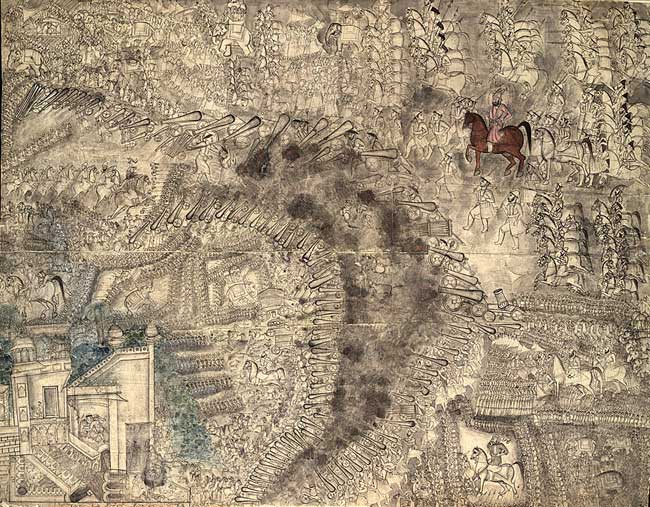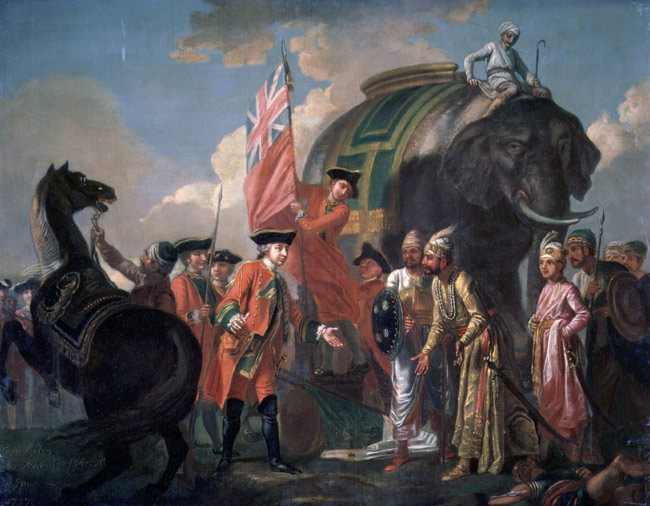
In recent years we’ve seen some very successful books by the likes of Niall Ferguson and Lawrence James, which have taken the British Empire in India as some sort of advertisement for benign British nobility.
Ferguson talks about it laying the foundations for today’s globalisation, while Lawrence James says it was the single most altruistic act one country has done for another.
There’s been so much of this around that it became necessary to offer a corrective. My book, unlike many of its predecessors, not only makes the argument against imperialism, it specifically takes up the claims made for imperialism and demolishes them, one by one. Which I think gives it a particularly useful place in the historiography of the Raj in India.
This article is an edited transcript of Inglorious Empire: What the British Did to India with Shashi Tharoor on Dan Snow’s History Hit, first broadcast 22 June 2017.
 Listen Now
Listen NowIs Britain guilty of historical amnesia?
In the days when India was struggling there was a discreet veil drawn over all of this. I would even accuse Britain of historical amnesia. If it’s true that you can pass your History A levels in this country without learning a line of colonial history then surely there’s something wrong. There’s an unwillingness, I think, to face up to the realities of what happened over 200 years.
Some of the most damning voices in my book are those of British people who were clearly outraged by their country’s actions in India.
In the 1840s an East India Company official called John Sullivan wrote about the impact of British rule in India:
“The little court disappears, trade languishes, the capital decays, the people are impoverished. The Englishman flourishes and acts like a sponge drawing up riches from the banks of the Ganges and squeezing them down upon the banks of the Thames.”
In the early decades of British rule in India the East India Company, that’s exactly what happened.

A Faizabad style drawing of the Battle of Panipat in 1761. Credit: British Library.
The East India Company was there to trade, why did they end up breaking weaving looms and seeking to impoverish people?
If you are trading, but not at the point of a gun, you have to compete with others who want to trade for the same goods.
As part of its charter, the East India Company had the right to use force, so they decided that where they couldn’t compete with others they would force the matter.
There was a thriving international trade in textiles. India was the world’s leading exporter of fine textiles for 2,000 years. Pliny the Elder is quoted commenting on how much Roman gold was being wasted in India because Roman women had a taste for Indian muslins, linens and cottons.
There was a long-established set of free trade networks which would not have made it easy for the East India Company to make profits. It was far more advantageous to interrupt the trade, bar access to the competition – including other foreign traders – smash the looms, impose restrictions and duties on what could be exported.
 Watch Now
Watch NowThe East India Company then brought in British cloth, inferior though it was, with practically no duties imposed on it. So the British had a captive market, held by force of arms, that would buy its goods. Ultimately profit was what it was all about. The East India Company was in it for the money from start to finish.
The British arrived in India 100 years before they started conquering it. The first British person to arrive was a sea captain called William Hawkins. In 1588 then the first British ambassador to India, Sir Thomas Roe, presented his credentials to the Emperor Jahangir, the Mughal Emperor, in 1614.
But, after a century of trading with permissions from the Mughal Emperor, the British witnessed the beginning of the collapse of Mughal authority in India.
The biggest blow was the invasion of Delhi by Nader Shah, the Persian invader, in 1739. The Mahrattas were also very much on the rise at that time.

Lord Clive meeting with Mir Jafar after the Battle of Plassey. Painting by Francis Hayman.
Then, in 1761, the Afghans came. Led by Ahmad Shah Abdali , the Afghans’ victory at the Third Battle of Panipat effectively knocked out a countervailing force that might have stopped the British.
By that time when once the Mughals had pretty much collapsed and the Mahrattas had been stopped dead in their tracks (they got us far as Calcutta and were kept out by the so called Mahratta Ditch, dug by the British), the British were the only significant rising power on the subcontinent and therefor the only game in town.
1757, when Robert Clive defeated the Nawab of Bengal, Siraj ud-Daulah at the Battle of Plassey, is another significant date. Clive took over a vast, rich province and thus began a creeping annexation of the rest of the subcontinent.
At the end of the 18th century, Horace Walpole, son of the famous Prime Minister Robert Walpole, said of the British presence in India:
“They starved millions in India by monopolies and plunder, and almost raised a famine at home by the luxury occasioned by their opulence, and by that opulence raising the price of everything, till the poor could not purchase bread!”














